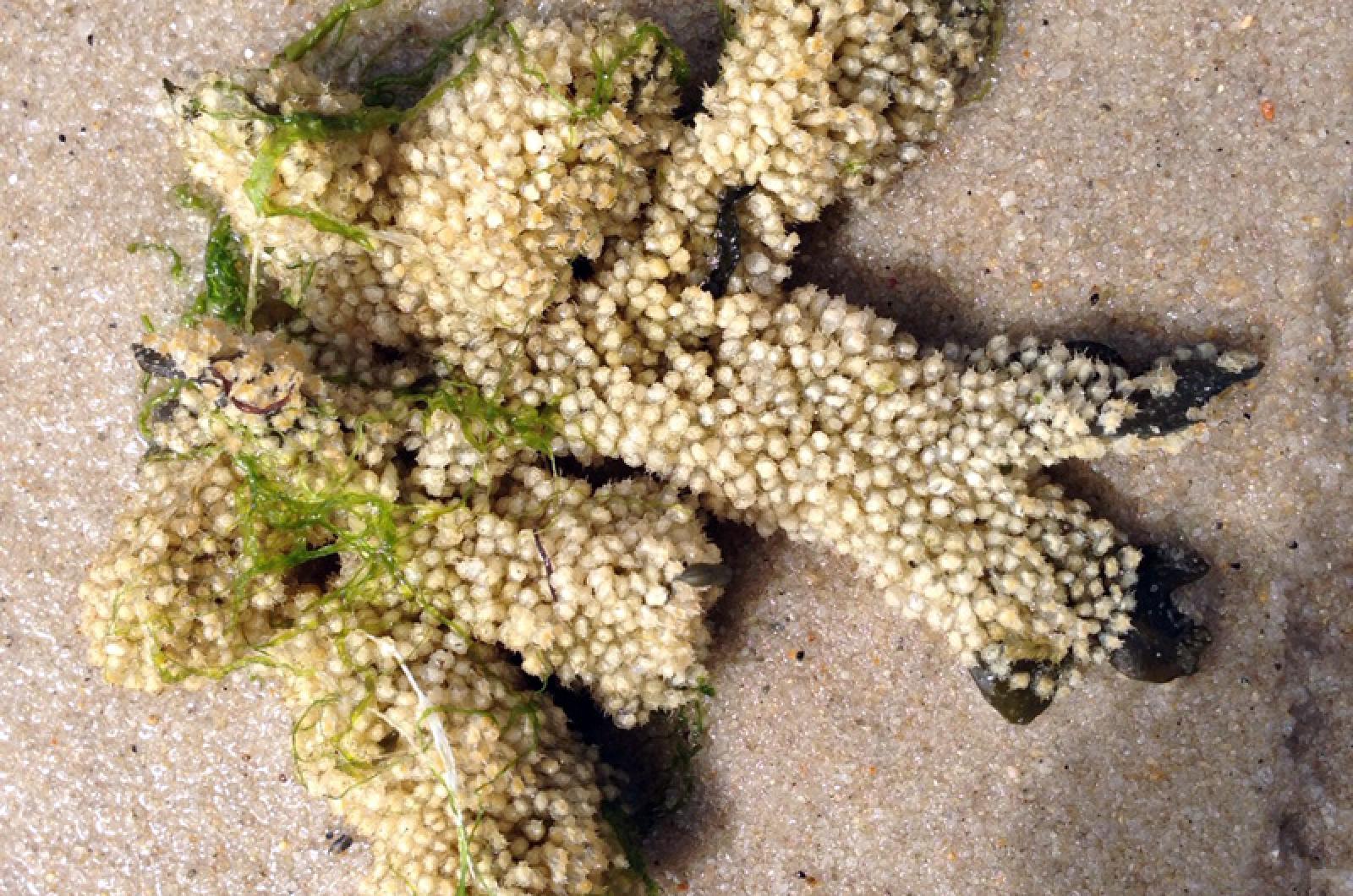Their name is mud, but they aren’t at all offended.
Mud snails are happy to be associated with, covered by, and named for mud. These small, ubiquitous marine gastropods even call mud home. Find them Island-wide in muddy shallows, tidal shorelines and brackish pond edges.
Though known by many names, including dog whelks, mud dogs, mud whelks and mud basket snails, it is their numbers that impress. Aggregates of hundreds of thousands of mud snails can be observed.
They find each other using chemoreceptors, following mucus trails left by other mud snails. Those mucus trails can be a telling form of snail mail...if a sick or weak snail leaves the mucus, its brethren won’t follow the soon-to-be-incapacitated snail.
These sums of snails allow for easier mating. Since mud snails reproduce sexually, the more the merrier in terms of finding a mate. After pairing in spring and fall, mud snails lay eggs in capsules they create.
These capsules are unique, appearing as small crystal cases, and are attached in rows on hard surfaces such as eel grass, shells, rocks or even debris. The numbers of capsules are a surprise until you connect them with the multitudes of snails from which they emerged. Large numbers of eggs are important, since many of the larvae will be consumed quickly after they emerge from their capsule after a 10-day gestation.
Their parents or other snail relatives may even eat them, since mud snails are omnivores and eat a variety of foods, including their own young. Other foodstuffs include algae, detritus, animals and even mud, from which they obtain plankton and other tasty microorganisms.
The surviving mud snail larvae float freely in the water for 20 to 30 days before settling down and metamorphosing into the adult mud snail. They are dormant in winter and will continue their cycle for their lifespan, which is up to five years.
It isn’t clear whether mud snails are suitable for human consumption, though the mud and mucus lessens their appeal. However, they are favored for a few other reasons. Known as good eaters, they are popular in aquariums for their filtering finesse. And hermit crabs are also fond friends, since the snail shells are the perfect size for this house-seeker.
However, those who seek to sling mud have complaints about this snail. It has become an invasive species on the West Coast in Pacific waters, outcompeting their indigenous snails. Another problem is that mud snails are hosts for the blood fluke larva that is responsible for some types of swimmer’s itch.
No matter how much mud you throw at this snail, they will remain a favorite for all of us at Felix Neck for their education value and fun when you serenade them with a hum. If you haven’t hummed to this snail, take my advice and try. Hold a handful of snails near your mouth and hum, then watch the snails emerge from their shells to investigate the sound and vibration.
Though it sounds odd, don’t be a stick in the mud. Serenade these mud-dwellers to both their and your delight.
Suzan Bellincampi is director of the Felix Neck Wildlife Sanctuary in Edgartown, and author of Martha’s Vineyard: A Field Guide to Island Nature.




Comments
Comment policy »